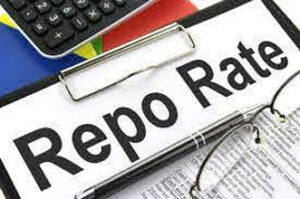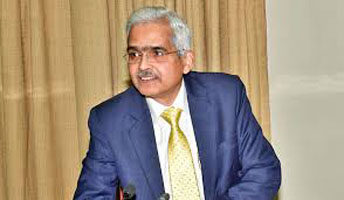MUMBAI, DEC 4
Concerned over elevated inflation, Reserve Bank of India on Friday decided to leave THE benchmark interest rate unchanged at 4 percent but maintained an accommodative stance, implying more rate cuts in the future if the need arises to support the economy hit by the COVID-19 pandemic.

The benchmark repurchase (repo) rate has been left unchanged at 4 percent, Governor Shaktikanta Das said while announcing the decisions taken by the central bank’s Monetary Policy Committee (MPC).
Consequently, the reverse repo rate will also continue to earn 3.35 percent for banks for their deposits kept with the Reserve Bank of India (RBI).
He said MPC voted for keeping the interest rate unchanged and continued with its accommodative stance to support growth.
The central bank had slashed the repo rate by 115 basis points since late March to support growth.
RBI had last revised its policy rate on May 22, in an off-policy cycle to perk up demand by cutting interest rates to a historic low.
The 26th meeting of the rate-setting MPC with three external members — Ashima Goyal, Jayanth R Varma, and Shashanka Bhide — began on December 2. This is the second meeting of these members who are appointed for a term of four years.
The government moved the interest rate-setting role from the RBI Governor to the six-member MPC in 2016. Half of the panel, headed by the Governor, is made up of external independent members.
MPC has been given the mandate to maintain annual inflation at 4 percent until March 31, 2021, with an upper tolerance of 6 percent and lower tolerance of 2 percent.
RBI expects positive growth in second half of 2020-21
Reserve Bank of India (RBI) on Friday said it expects the economy to record positive growth in the second half of the current financial year.
The economy contracted by 23.9 percent in the first quarter and 7.5 percent in the second quarter on account of the COVID-19 pandemic.
“The second half is expected to show some positive growth,” RBI Governor Shaktikanta Das said, adding that during the financial year as a whole the economy was likely to contract by 7.5 percent, which is an improvement over its previous projection of 9.5 percent contraction.
In October, the RBI had projected the contraction in the gross domestic product (GDP) at 9.5 percent.
Das said the GDP is expected to turn positive in the third quarter and expand at 0.1 percent. The last quarter is likely to see an expansion of 0.7 percent.
Hence, the growth in the second half of the fiscal is expected to show positive growth.
In its October monetary policy statement, RBI had said the real GDP growth in 2020-21 is expected to be negative at (-) 9.5 percent, with risks tilted to the downside (-) 9.8 percent in Q2 2020-21; (-) 5.6 percent in Q3; and 0.5 percent in Q4.
Highlights of monetary policy statement
- Benchmark rate kept unchanged for the third time in a row at 4 pc
- Indian economy expected to contract 7.5 pc this fiscal, lower than 9.5 pc contraction projected in Oct
- Economy to clock growth of 0.1 pc in Q3; Q4 to see 0.7 pc growth
- Retail inflation projected at 6.8 pc in Q3, 5.8 pc in Q4
- Inflation to remain elevated, barring transient relief in the winter months
- Fiscal stimulus moving beyond being supportive of consumption and liquidity to supporting growth-generating investment
- Private investment still slack and capacity utilisation has not fully recovered
- RBI to use various instruments at appropriate time to ensure ample liquidity is available in the system
- RBI ready to take further measures to ease liquidity; will continue to respond to global uncertainty
- RBI to maintain the accommodative monetary policy stance to support growth, keep inflation at the targeted level
- To raise limit for the contactless card transaction from Rs 2,000 to Rs 5,000 per transaction from January
- TGS system to be made 24X7 in next few days
- ommercial, cooperative banks to retain profit made in 2019-20; not to make any dividend payment
- RBI committed to preserving depositors” interest in the financial system.












